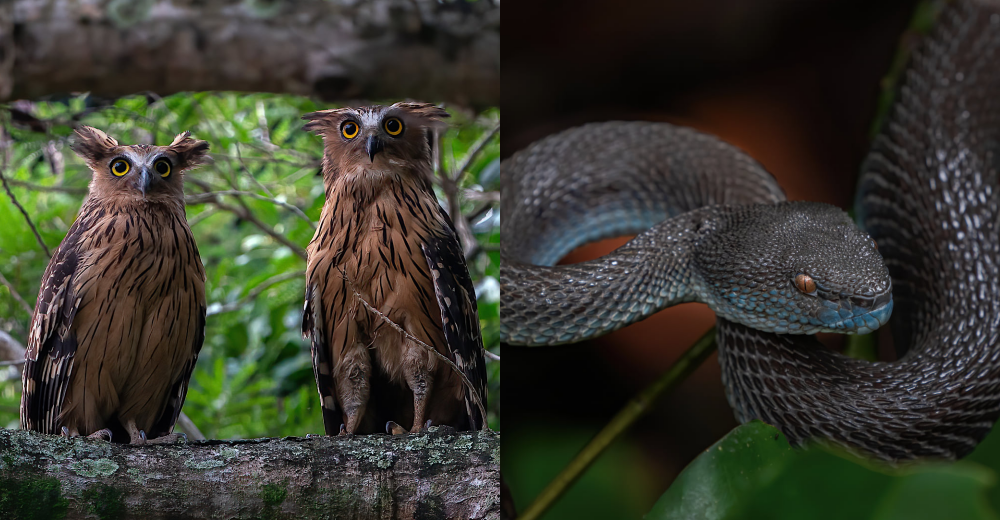Follow us on Telegram for the latest updates: https://t.me/mothershipsg
I have to be honest, I was a little disappointed when wildlife photographer, Jayaprakash Bojan (45), told me to meet him at Pasir Ris Park for our chat.
I had asked if I could accompany him on one of his wildlife photography shoots and I couldn’t imagine getting a glimpse of any form of wildlife in a recreational park, that was designed for, well, humans.
A little about Jayaprakash: He started his career as a full-time photographer back in 2016, after leaving his corporate job in the IT industry.
Just a year in, his photography career was “fast-tracked” after winning National Geographic Nature Photographer of the Year.
The photo that nabbed him the top prize is both beautiful and, honestly, a little uncomfortable to look at.
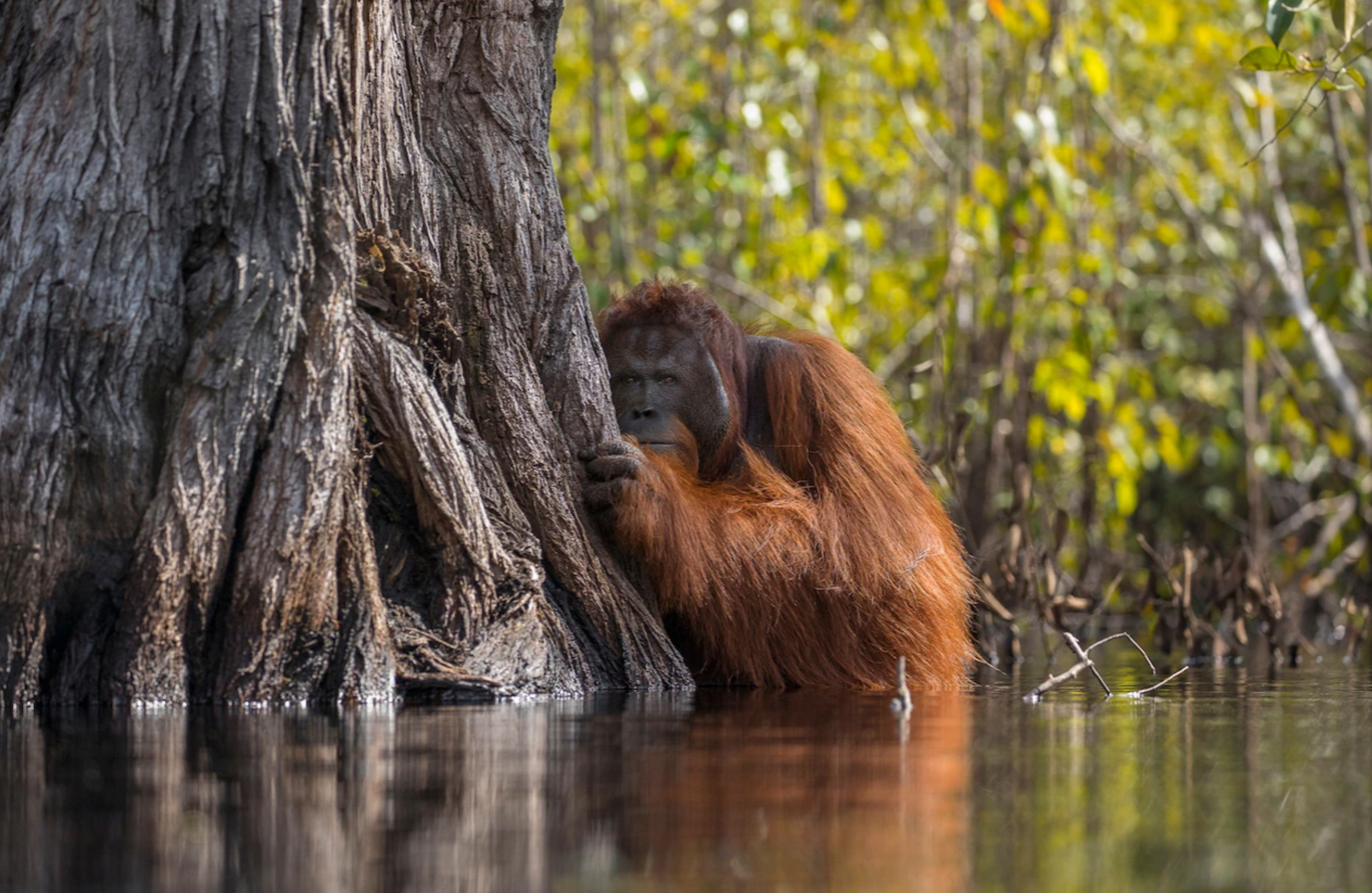 Image taken by Jayaprakash Bojan.
Image taken by Jayaprakash Bojan.
A solitary male orangutan peeks from behind a tree, waist-deep in possibly crocodile-infested waters, a situation brought about by mankind's propensity for "rampant palm oil cultivation", says the caption that Jayaprakash submitted.
It's very sobering, but the winning shot is also a testament to Jayaprakash's ability to find that intimate moment in wildlife that eludes many other photographers.
Over the years, he went from scaling the Himalayas looking for snow leopards to surviving blistering Japanese winters in search of red foxes and sea eagles. The last two years, however, saw the photographer grounded in Singapore.
During this time, he’s shot numerous photos and videos right in Pasir Ris Park that led many viewers to question:
“Is this really Singapore?”
Like many others, I too was sceptical about getting a glimpse of the wildlife in Singapore that he documents on his social media pages. After all, what can you possibly find in this concrete jungle?
Nonetheless, I packed my bag and left home before dawn, and drove down to the park that morning.
As I approached the park, I passed a row of houses leading to the entrance of Car Park D where we had arranged to meet. Yes, the park’s not too far away from residences and humans.
"How much of a wildlife adventure is this going to be?" I thought to myself.
Safe to say, after the morning with Jayaprakash, I realised that I've been missing out.
Within the park
“Let’s see if we can get something interesting,” he said to me as we set off into the park, his outsized and infectious sense of adventure matched only by the huge bag of equipment that he carried on his back.
We walked a distance towards the waters and right by the beach, he parked his bike and pulled out his camera. On it was a telephoto lens that was at least 20cm long.
He pointed his camera towards the sun rising over the water and peered into it.
“What is that? Is that an otter?” he muffled to himself, “Oh no, it’s just a branch.”
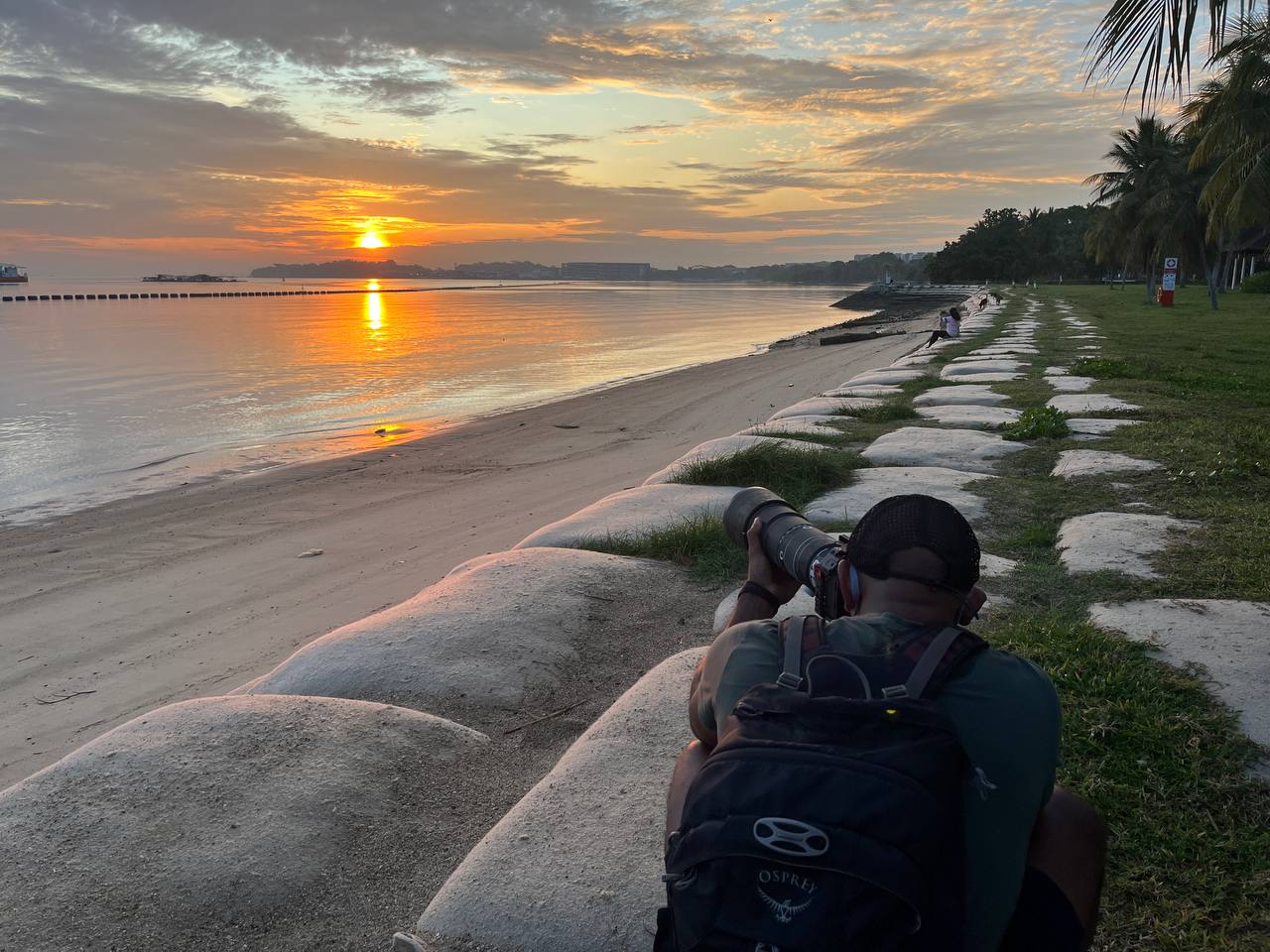 Image taken by Alfie Kwa.
Image taken by Alfie Kwa.
Almost every weekday, Jayaprakash comes to the park looking for a story to tell through his videos or photos.
Sometimes, he would spend an extended period of time on specific animals to document their behaviour and movements.
Once, he observed a family of spotted owls for two months straight.
“Every morning, I wouldn’t do anything but just stay put there… From them mating to having babies, to the babies leaving the nest. I watch them catch rats, frogs, stuff like that, and bring them back to the nest.”
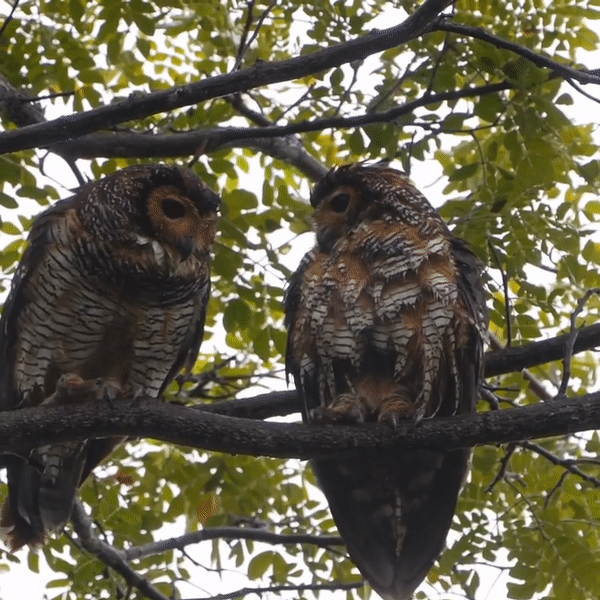 Video courtesy of Jayaprakash.
Video courtesy of Jayaprakash.
That morning's itinerary wasn't going to be as intensive though — thankfully.
As we walked along the coast, he pointed out two white-bellied sea eagles engrossed in a synchronised dance above the waves.
“That one, he is a juvenile,” Jayaprakash said pointing up in the sky, before offering this saucy titbit: “He’s dating an older female.”
 Video courtesy of Jayaprakash.
Video courtesy of Jayaprakash.
The younger bird is the offspring of a family of white-bellied sea eagles that Jayaprakash has been following for several years now.
While this young one left the nest quite some time back, its parents are still somewhere in the park.
For Jayaprakash, it's not hard to track this feathered family.
He typically enters the park at 5am when it's still dark. Devoid of people and alone with the residents (wildlife), Jayaprakash listens for the distinct sound of the white-bellied sea eagle.
He catches it, and off he goes on his bike in search of the avian creatures.
A keen observer
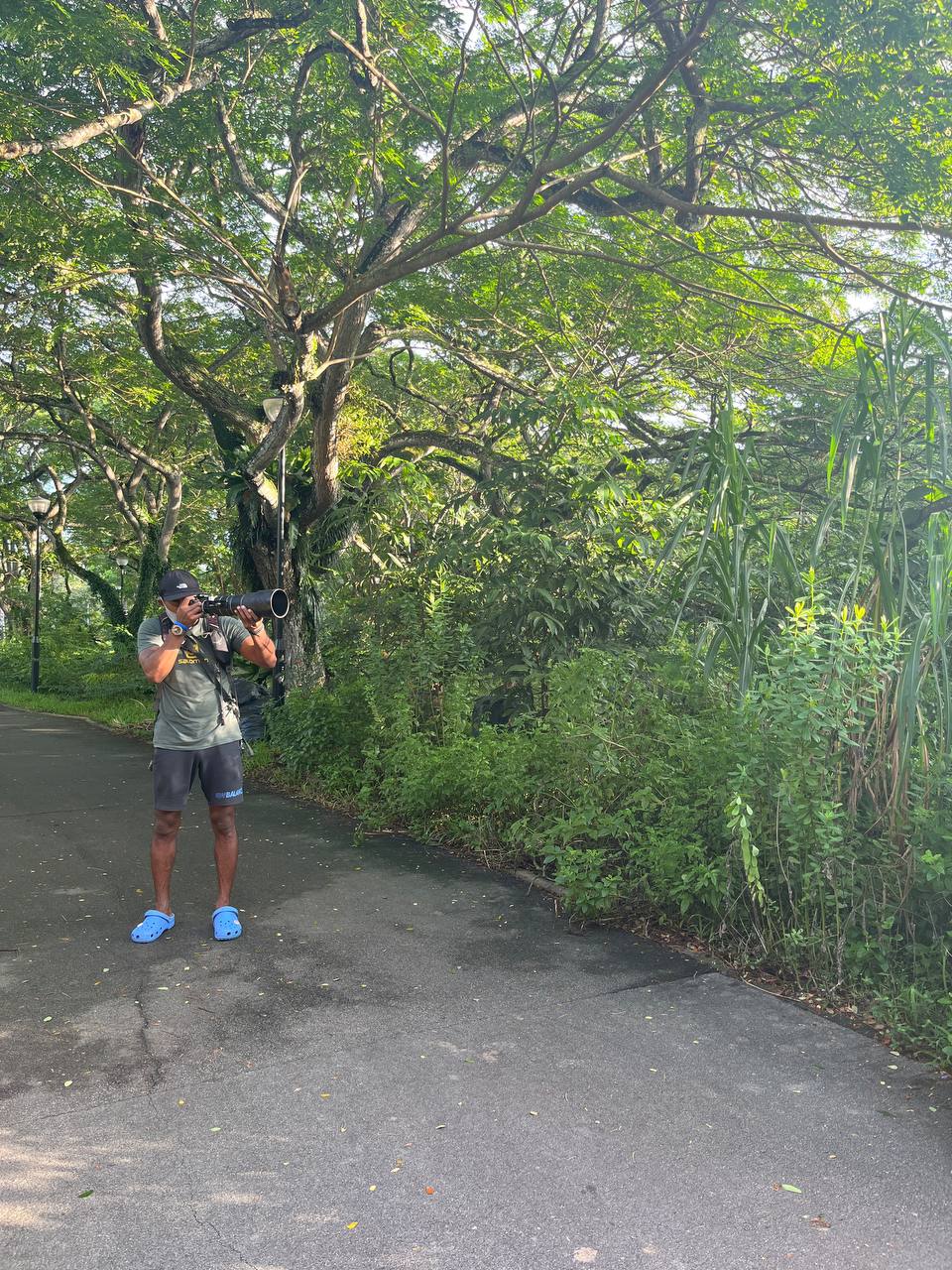 Image taken by Alfie Kwa.
Image taken by Alfie Kwa.
The white-bellied sea eagle family isn't the only group that Jayaprakash has been tracking.
He also keeps a tab on a pair of buffy fish owls, which park-goers affectionately named One-eyed Jack and Mary.
Jayaprakash came to know about the two after speaking to a couple of “tenured” photographers in the park.
Turning to me, he said:
“Did you know owls mate for life?”
Mary is One-eyed Jack’s new partner after his previous “wife” passed away in 2014. Some who frequent the park and know of the owls found the carcass of his late partner that year.
One-eyed Jack is apparently one of the oldest buffy fish owls in the park and is one that Jayaprakash sees frequently.
“He’s probably one of the most well-known characters because of his distinctive looks.”
As its name suggests, One-eyed Jack has only one eye. The other was lost sometime between 2012 and 2014.
Then, there was the family of 14 otters which Jayaprakash started following in 2016 right there in Pasir Ris. Right now, their numbers have shrunk to just three.
“It was love at first sight,” he recalled his first encounter with the otter family playing by the beach.
He witnessed the family grow in numbers, with six new pups born in 2016. He was also present when Aquarius, an otter from the family, was placed in the limelight after suffering severe injuries on its back.
And in 2018, he saw Aquarius stepping up as an adult in the pack.
Building a community
Jayaprakash seemed very familiar with where most of the animals were going to be.
As we walked around the park, he would point at a couple of trees, bushes or waterways, and say:
“Look, that's where the hornbills normally are."
"There are usually smaller snakes in there."
"Sometimes, the otters will be hunting here.”
This knowledge doesn't come by because of luck, he reminded me. It takes time to slowly learn and understand the behaviours of different animal species.
He also added that the community of wildlife enthusiasts at the park helped him throughout his journey.
For instance, he is very thankful for the uncles at the park who would share their latest finds, like a python in the mangroves or a family of otters in the longkang (drain).
As we navigated the park, he bumped into an elderly man with a camera slung across his back.
“Were you just at the mangroves? Did you see anything?” Jayaprakash said to the man.
The uncle just shook his head and after a short banter, the man cycled off to his next destination within the park.
“Uncle is one of the oldest and most tenured photographers… He helped me with a lot of my stories.”
Beyond the park, he’s made a couple of friends through his social media pages.
At times, when he’s at the park, some of his 40,900 Instagram followers would come up to him to say hi. Some would even buy him coffee and breakfast.
Once, a couple reached out to him through his Facebook page to tell him that they spotted some civet cats at their home and invited him to see them.
“It’s more accessible (in Singapore). It takes half an hour to get to another place to shoot.”
This is quite a change from his wildlife photography trips overseas before the pandemic. Scaling the Himalayan mountain range, Jayaprakash often felt like an “ant in this huge and massive landscape".
So switching to the Singaporean landscape, which is much more compact, was an eye-opening experience. But as Jayaprakash pointed out, even though it's smaller, the Singapore wildlife landscape has so much to offer.
“I was sweetly surprised by how much biodiversity there is, considering we have limited green space.”
One thing he learned while being grounded in Singapore is “let go and start seeing more”.
There is a common perception that Singapore is boring, and lacking in what other places can offer.
But for Jayaprakash, being grounded in Singapore for the last two years has taught him one thing: Let go and start paying more attention to your surroundings. You'll be surprised at what you find.
Observing what's around him
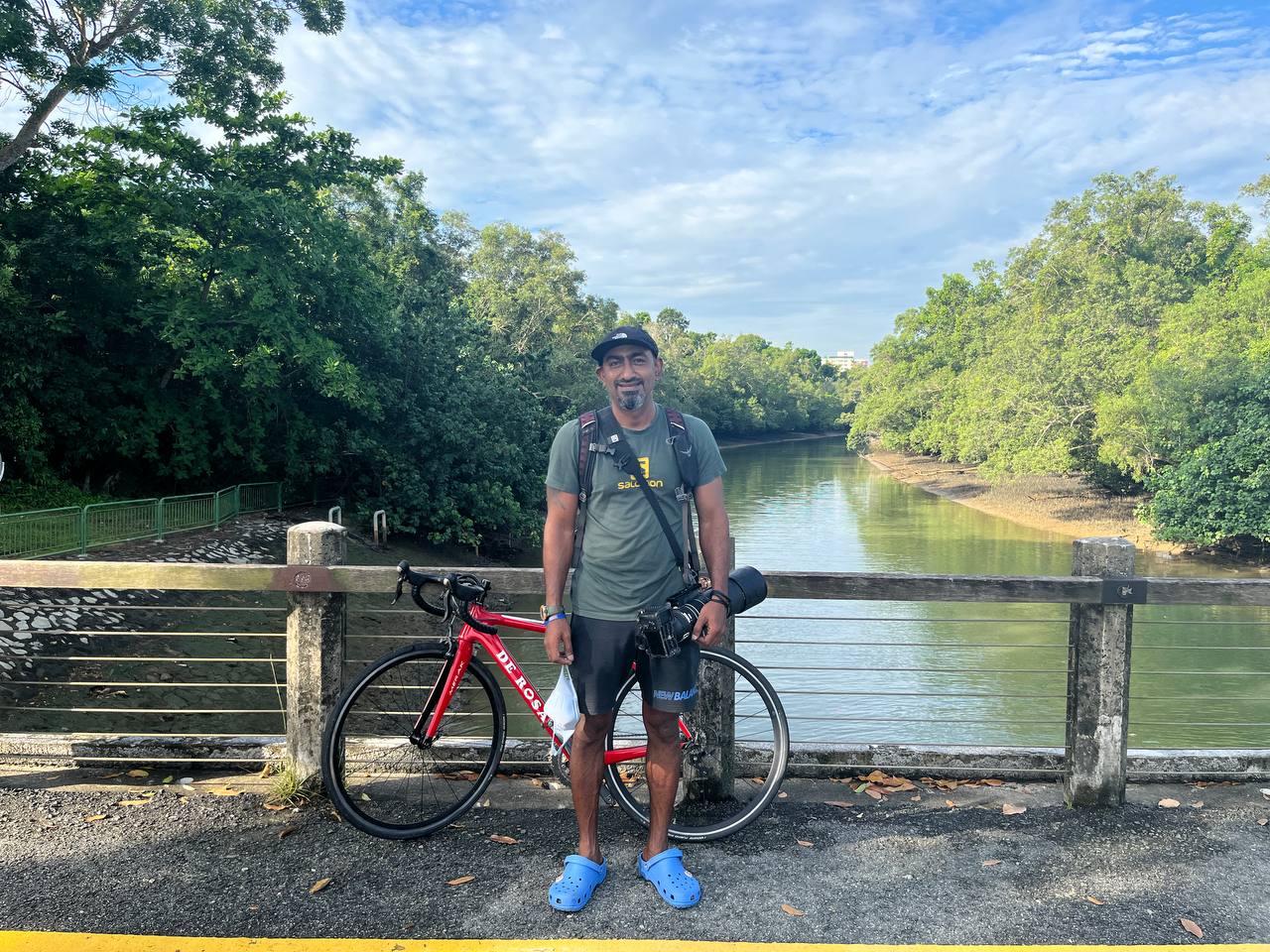 Image taken by Alfie Kwa.
Image taken by Alfie Kwa.
“Was it possible for me to survive in a place like Singapore and do wildlife (photography)? I didn’t use to think so,” Jayaprakash said.
To him, the idea was “pretty bizarre”.
Like I said early, if you scrolled through his social media pages, you may not believe that these images and videos were taken right here, in a local park.
Yet, they are.
In his two-part series called “Residents of the Park | Singapore”, he shares a series of short stories on Pasir Ris Park and its wild residents.
Like many other parks in Singapore, Pasir Ris Park is located right by a residential estate. Even Jayaprakash himself lives a short five minutes away.
And as the sun came up midway through our expedition, more Pasir Ris residents started turning up for their morning stroll or run. Soon, the park was filled with people despite it being a weekday morning.
But even though many walk through the park every day, they miss out on all the amazing wildlife living in plain sight like a snake slithering on a tree or a family of birds right above them, said Jayaprakash.
“Most of us are highly preoccupied with work and due dates in our mind… Even with photography, (I would be) chasing shot after shot.”
As he said this, he stopped by a thicket and quietly whips out his camera to shoot a couple of butterflies fluttering in the sunlight.
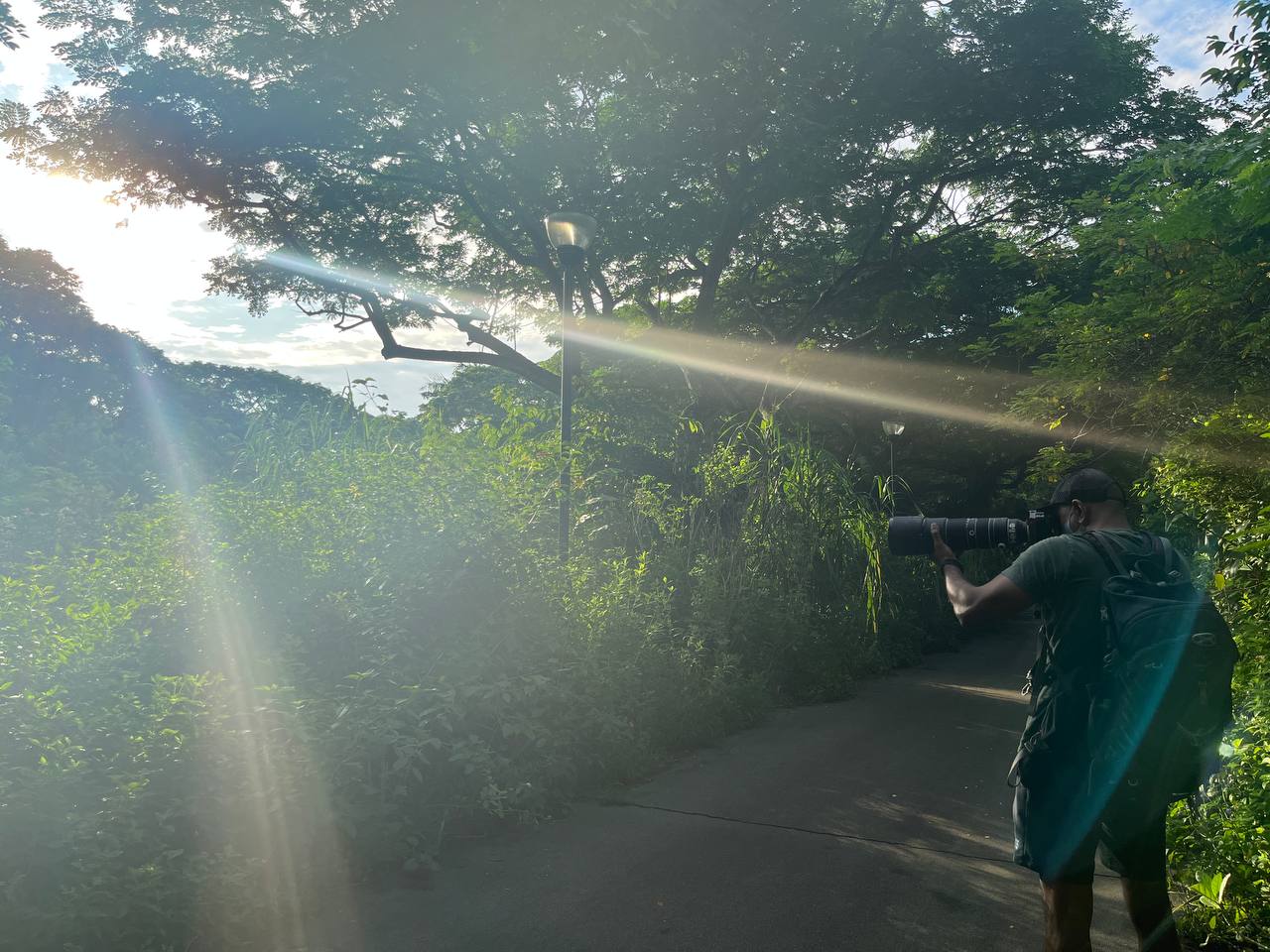 Image taken by Alfie Kwa.
Image taken by Alfie Kwa.
“Once you start observing more, it makes you a better photographer, a better storyteller.”
And I believe that is a takeaway for anyone, in any occupation.
Check out Jayaprakash's latest project:
Follow and listen to our podcast here
Top images courtesy of Jayaprakash.
If you like what you read, follow us on Facebook, Instagram, Twitter and Telegram to get the latest updates.
